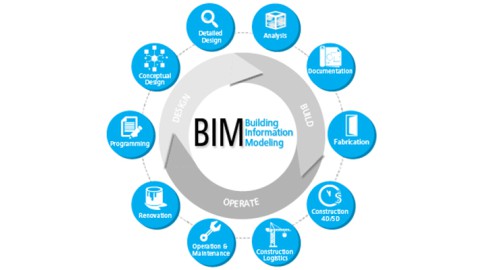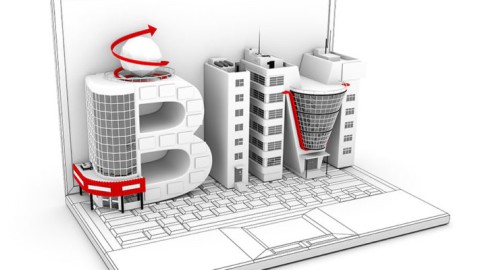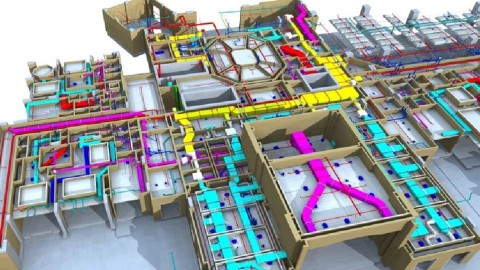BIM
What is Building Information Modeling (BIM)?
The construction industry has undergone a significant transformation in recent years thanks to the adoption of new technologies. Among these innovations, Building Information Modeling (BIM) stands out, a revolutionary methodology that has radically changed the way construction projects are conceived, designed, built and managed. In this extensive article, we will explore in detail what BIM is, how it has evolved since its inception in the 1970s, how it works today, and what its benefits are. We will also look at the impact of BIM on the construction industry and the exciting future that lies ahead.
BIM beginnings
The development of Building Information Modeling (BIM) dates back to the 1970s, when visionaries such as Chuck Eastman and Jonathan Ingram began exploring new ways to use computer technology to improve the construction process. Chuck Eastman created the Building Description System (BDS), a pioneering tool for modeling buildings and managing information related to design, construction and operational analysis. Jonathan Ingram developed software such as RUCAPS, Sonata and Reflex, which also incorporated additional information into the building model, such as time, cost, manufacturer data and sustainability. These innovators laid the groundwork for integrating data beyond graphical representation into the construction process.


Evolution of BIM
In 1986, Jonathan Ingram launched Sonata, considered the world’s first BIM-capable program. This software paved the way for the development of more advanced solutions. The following year, in 1987, ArchiCAD, the first commercial BIM program designed for personal computers, was introduced. This was a crucial stage in the history of BIM, as it marked the popularization of the phrase “Building Information Modeling“. In the early 2000s, Autodesk published a white paper with the same title, further consolidating the concept of BIM. During this evolution, BIM replaced graphic design software with database technology, enabling the creation of a single source of information shared by multidisciplinary design and construction teams.


How BIM works nowadays
Today, Building Information Modeling (BIM) is based on collaboration and interoperability between all the actors involved in the construction project. It uses specialized software that allows the creation and manipulation of three-dimensional digital models. These models not only represent the geometry of the building, but also contain additional information related to design, costs, schedules, materials, maintenance and other relevant aspects. Collaboration is essential in BIM, as it allows all teams to work on the same digital model, share information and make modifications in real time. This improves coordination, reduces errors and conflicts, and facilitates informed decision making throughout the project lifecycle.


BIM benefits
The adoption of BIM has demonstrated a wide range of benefits for all parties involved in a construction project. First, it improves design accuracy and quality by visualizing and detecting potential errors or conflicts early in the project. In addition, BIM contributes to the reduction of costs and construction time by identifying and solving problems before they become costly changes or delays in the work. It also facilitates energy analysis, enabling design optimization to improve building efficiency and sustainability. BIM also improves communication between project teams by providing visual representation and accurate data for better understanding and informed decision making.


Impact of BIM on the construction industry
The adoption of BIM has had a significant impact on the global construction industry. It has improved productivity throughout the construction value chain by optimizing design, construction and maintenance processes. In addition, it has fostered a cultural shift in the way construction projects are approached, promoting collaboration and communication among multidisciplinary teams. BIM has also driven the creation of standards and regulations related to its use, which has generated a common framework for the industry and facilitated the adoption and exchange of information.

The future of BIM
Building Information Modeling (BIM) will continue to evolve and transform the construction industry in the future. It is expected to move towards real-time BIM, where models will automatically update as data and events in the project change. In addition, BIM will be integrated with emerging technologies such as virtual reality, augmented reality and artificial intelligence, which will further enhance visualization, collaboration and decision making. BIM is expected to extend beyond the construction stage and be used in the operation and maintenance of buildings, enabling more efficient and prolonged management of built assets.

Building Information Modeling (BIM) has revolutionized the construction industry by providing an integrated digital platform for collaboration, visualization and project management. From its inception in the 1970s to the present day, BIM has undergone significant evolution thanks to pioneers and technological advancement. The adoption of BIM has demonstrated substantial benefits, improving the efficiency, quality and sustainability of construction projects. BIM has changed the way we design, construct and manage buildings, and its future promises even more innovation and advancement in the construction industry. As BIM continues to evolve, the industry will benefit from its ability to improve collaboration, reduce costs and optimize efficiency at all stages of a construction project’s life cycle.
Comments
We are interested in your opinion, please leave us a comment